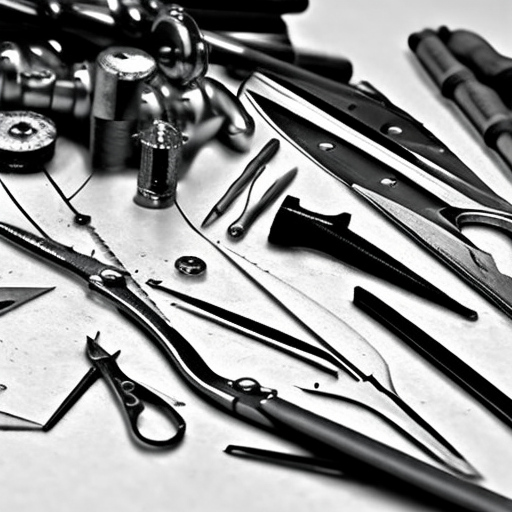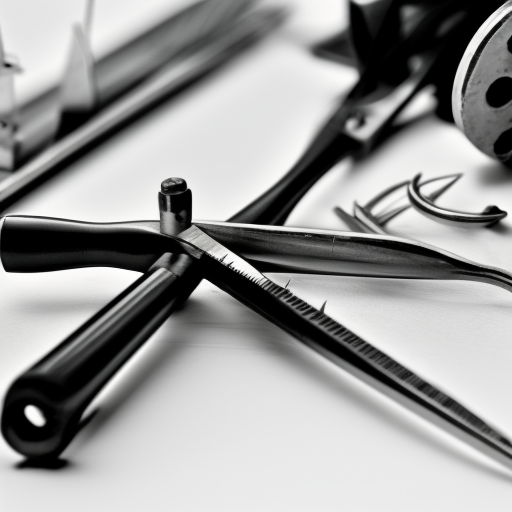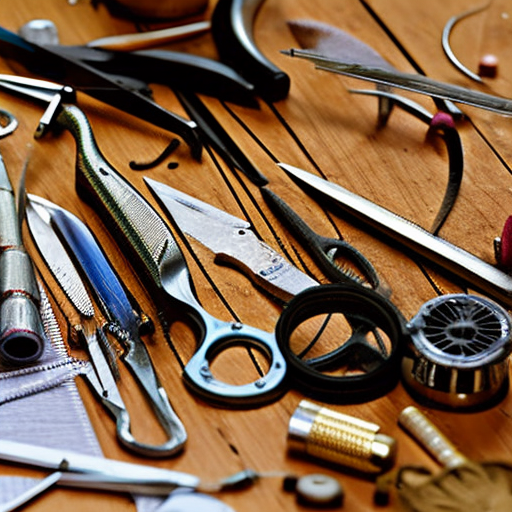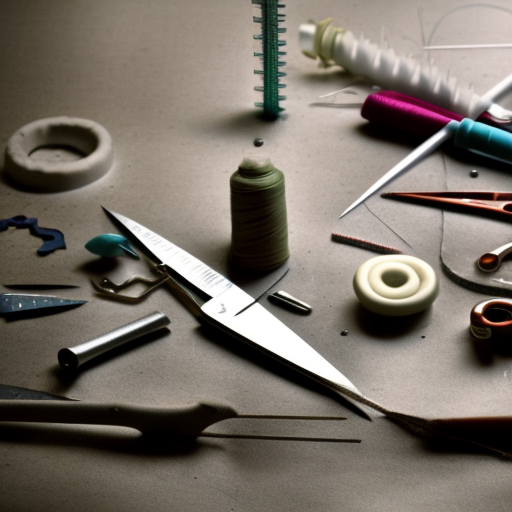
Are you someone who loves to sew and create beautiful things with your own hands? Or are you just starting out and want to learn more about the different types of sewing materials available? Look no further, as we reveal the secrets behind the ultimate sewing material handbook.
Sewing is a form of art and having the right materials can make all the difference in your finished product. With so many options available, it can be overwhelming to know which materials to choose for your projects. But fear not, as we break down the essential sewing materials that every crafter should have in their toolkit.
Fabrics
Fabric is the backbone of any sewing project. There are countless types of fabrics available, each with their own unique properties. The most common types of fabric used in sewing are cotton, linen, silk, wool, and polyester. When choosing a fabric, consider the weight, texture, and stretch of the fabric. Some fabrics are better suited for certain projects, such as cotton for quilting and silk for delicate garments.
It’s also important to pay attention to the grain line of the fabric. The grain line refers to the direction in which the threads run in the fabric. It’s important to cut the fabric with the grain line to ensure that the final product is symmetrical and doesn’t stretch or warp.
When purchasing fabric, always make sure to buy a little extra to account for shrinkage and mistakes. It’s better to have too much fabric than not enough.
Thread
Another essential sewing material is thread. Thread comes in different weights and colors, and it’s important to match the weight of the thread to the fabric you will be working with. A thicker fabric will require a heavier thread, while a more delicate fabric will need a lighter thread. Matching the color of the thread to the fabric is also crucial to achieving a polished look in your finished project.
It’s also important to choose the right type of thread for your project. Polyester thread is a good all-purpose option, while nylon and silk are better for more delicate fabrics. Always make sure to buy good quality thread, as it can make a big difference in the strength and appearance of your stitches.
Notions and Tools
Notions and tools are the small but mighty helpers in any sewing project. These include items like pins, needles, scissors, measuring tape, and a seam ripper. It’s important to have a variety of pins and needles for different types of fabric and stitching techniques. A sharp pair of scissors and a seam ripper are also essential for precise cutting and corrections.
Other useful tools to have in your sewing kit include a sewing machine, iron, and marking tools. These will make your sewing projects more efficient and professional-looking.
Embellishments
Lastly, embellishments are a fun way to add personal touches and make your sewing projects stand out. These include buttons, zippers, ribbons, and trims. When choosing embellishments, make sure to match them to the fabric and style of your project. For example, large buttons would look out of place on a delicate, flowy dress.
It’s also important to properly attach these embellishments, as they can affect the overall look and functionality of your project. Make sure to follow proper techniques and use the right tools, such as a zipper foot for attaching zippers.
Conclusion
Now that you know the secrets behind the ultimate sewing material handbook, you can confidently take on any project and create beautiful pieces with ease. Remember to choose quality materials, pay attention to details, and have fun with embellishments. Happy sewing!
With the rise of DIY culture and sustainability, more and more people are turning to sewing as a way to express their creativity and make their own unique pieces. Whether you’re a seasoned pro or just starting out, having the right sewing materials is crucial to achieving a successful and professional-looking project. In this article, we will reveal the secrets behind the ultimate sewing material handbook – a guide that will help you choose the right materials for any sewing project.
The first and most essential material in any sewing project is fabric. With countless types of fabrics available, from cotton to silk to wool, it can be overwhelming to know which one to choose. When selecting a fabric, consider its weight, texture, and stretch. For example, cotton is a popular choice for quilting due to its durability, while silk is perfect for delicate garments. It is also important to pay attention to the grain line of the fabric – cutting against the grain can cause the fabric to stretch or warp. Always remember to buy a little extra fabric than what is needed, as shrinkage and mistakes may occur during the sewing process.
Thread is another vital material in sewing. It is important to match the thread weight to the fabric weight for strong and sturdy stitches. Polyester thread is a good all-purpose option, while nylon and silk are better suited for delicate fabrics. Choosing the right color of thread is also crucial – it should blend in with the fabric to create a polished and professional look.
In addition to fabric and thread, notions and tools are essential in any sewing project. These include items such as pins, needles, scissors, measuring tape, and a seam ripper. It’s important to have a variety of pins and needles for different types of fabric and stitching techniques. A sharp pair of scissors and a seam ripper are also crucial for accurate cutting and corrections. Other useful tools to have in your sewing kit include a sewing machine, iron, and marking tools for precise measurements and markings.
Embellishments add that extra touch of personalization and creativity to your sewing projects. These can include buttons, zippers, ribbons, and trims. When choosing embellishments, make sure to match them to the fabric and style of your project. For example, large buttons would look out of place on a delicate, flowy dress. Properly attaching these embellishments is also important – use the right tools and techniques to ensure they are secure and add to the overall look of your project.
In conclusion, having the right materials and tools is crucial in achieving a successful sewing project. By following the tips and guidelines in this ultimate sewing material handbook, you can confidently take on any project and create beautiful pieces with ease. From fabric to thread to notions and embellishments, pay attention to details and choose quality materials for a polished and professional final product. Happy sewing!





All these tips look great!
James Smith: Can’t wait to try them out!
This looks like such a helpful resource! Looking forward to learning a ton of new sewing techniques and projects with this practical advice.
This looks like exactly what I need!
I’m a novice sewer and can’t wait to get started!
Absolutely! So excited to get sewing!